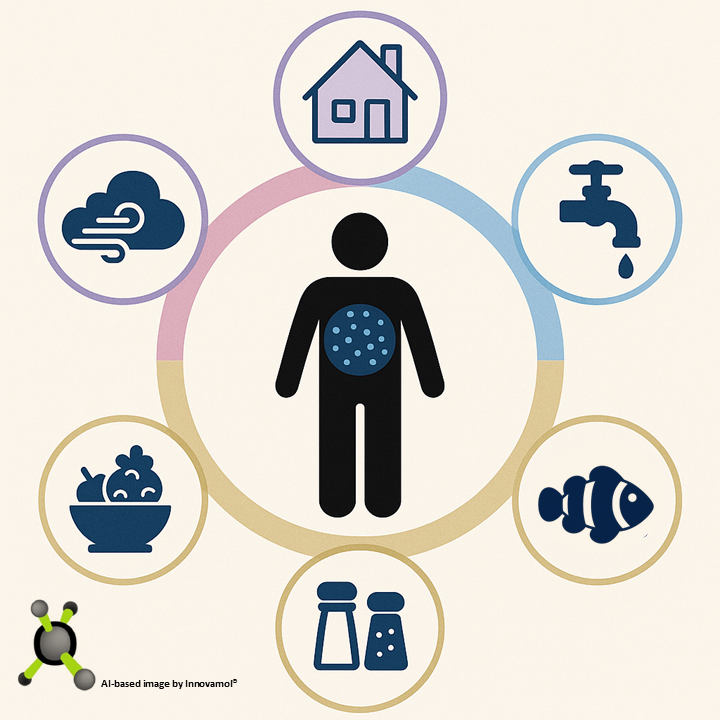These days, microplastics and nanoplastics can be found in the most unlikely places on Earth, including inside human bodies, suspended in indoor air, embedded in soil, and moving through glacial rivers. Microplastics enter the human body through inhalation and ingestion. Once internalised, they can access the circulatory system and become distributed across various organs. Public concern is rising—but concrete answers about the risks to human health remain difficult to identify. What makes it so difficult to assess the threat these particles pose?
One major challenge is the extreme heterogeneity of microplastics themselves. Unlike a single toxic chemical with a defined structure and mode of action, microplastics vary in almost every parameter: size, shape, polymer type, solubility, surface chemistry, and even age. Primary micro- and nanoplastic particles tend to be spherical and regular, while secondary ones—fragments from degradation—are irregular and unpredictable. Add to that the presence of additives, plasticisers, and environmental contaminants adsorbed onto surfaces, and it’s clear we’re not dealing with a single substance but with an ever-changing cocktail.
Another limitation is analytical. Detecting and quantifying micro- and especially nanoplastics in biological tissues is still technically demanding. Most methods lack the resolution or specificity needed to isolate plastic particles from organic matter. Even when detection succeeds, identifying the type of polymer or linking it to a specific health effect is difficult. Techniques like confocal microscopy, Raman spectroscopy, and RNA-seq are helping—but standardisation is still a long way off. The lack of harmonised protocols leads to inconsistent data, making comparisons between studies nearly impossible. Additionally, suitable test materials are missing, while those currently on the market are fine for understanding the mechanisms but are not suitable for ecotoxicology studies on humans.
Even when plastic particles are found in the body, understanding their effects is not straightforward. Some studies have shown that internalized particles can trigger inflammation, oxidative stress, or mitochondrial dysfunction in immune cells. Others have suggested interference with key hormonal pathways, especially those related to reproduction. However, there are many unknowns when it comes to converting in vitro or animal results into useful human risk assessments. Exposure levels in the lab often exceed real-life conditions, and many observed effects are subtle, variable, or reversible.
In addition, there is also the chronic nature of exposure to be considered. Humans are not exposed to one particle at one moment, but to a constant flow of airborne, waterborne, and foodborne plastics over a lifetime. Current toxicological models are not designed to simulate such low-dose, long-duration exposures. Nor do they account for interactions between particles and the thousands of chemicals already present in our environments and bodies.
If microplastics truly represent a public health threat, it is likely to be a slow burning one. The damage might accumulate gradually, through mechanisms like endocrine disruption, immune modulation, or microbiome interference. But detecting such effects requires long-term epidemiological studies and better biomarkers, both of which are still in development.
We are confronted with a challenge: microplastics are everywhere but our knowledge of their biological effects is incomplete. While we continue to struggle with the fundamental concepts of exposure and toxicity, we are developing a framework for risk assessment. Both science and policy maker must be guided by precaution, not panic, until techniques, models, and monitoring tools are more developed.
“Equipped with his five senses, man explores the universe around him and calls the adventure Science” – Edwin Hubble

